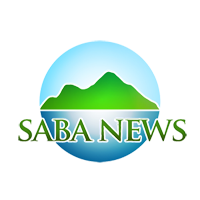As part of the Public Entity’s ongoing measures to mitigate erosion, increase the health of the island’s vegetation, and safeguard native biodiversity, an invasive species control mission is taking place for the coming two months. The project primarily focuses on the removal of free-roaming goats but also addresses other invasive species, including non-native iguanas, rats, and feral cats. The Public Entity Saba is working closely together with the Saba Conservation Foundation (SCF) on these initiatives. The SCF is currently mapping goat and cat population size and behavior with the use of cameras and is working on a rat-removal program that will take place alongside the removal of feral cats.

From the start of the livestock control project in 2020 until now, the island has seen a reduction of an estimated 90+ percent of free-roaming livestock on the island. The recovery of vegetation is becoming visible with grasses, shrubs and trees emerging in even some of the previously more barren areas on the island. The current mission aims to further reduce the population, with the ultimate goal of benefiting native biodiversity and erosion control on Saba. The project aims to remove all free-roaming goats. This is needed to make sure the problem of overgrazing cannot return through reproduction of remaining animals. With the current low numbers of roaming goats, specialist techniques are needed to locate the remaining individuals. A common technique in the field of invasive species control is the use of ‘Judas animals’.
This approach is target-specific and one of the most effective techniques available. Feral goats are captured, sterilized, equipped with tracking collars, and subsequently released to locate the other goats that have remained undetected so far. As goats are social animals, the Judas goats are expected to move to places where they find other goats. With the use of tracking collars and drones equipped with heat sensors, the team can track the location of the Judas goats and determine how many other goats are nearby. This information will greatly increase the efficiency of the hunters in culling the remaining feral goats. Judas animals will remain on the island throughout the project and even for a while afterwards, to determine whether the last goats have been found. This means that the Public Entity will make use of Judas animals for at least 2 years. All Judas animals will be sterilized and thereby do not form a threat to population increase.
Note to local hunters: collared goats have undergone a surgical procedure rendering their meat unsafe for human consumption.
For the removal of iguanas, cats and rats, other approaches will be used. The presence of non-native iguanas on the island is currently being mapped by an iguana expert. This needs to be repeated regularly, as (for now) only adult non-native iguanas can be distinguished from the native population. Identified non-native specimens will be culled. Fortunately, the population of non-native iguanas (a few dozen individuals have been spotted) seems to still be small on Saba. This means that a targeted approach can be taken. Non-native iguanas form a threat to biodiversity on Saba, as they can introduce diseases and parasites to the island, and because they grow larger and lay more eggs than the Saba Black Iguana, thereby outcompeting and slowly overtaking the native population.
The removal of cats will primarily focus on the nesting sites of red-billed tropic birds, where they pose a significant threat to the breeding population. Additionally, cats will be removed from areas with high concentrations of feral cats, like the St John’s area, which is currently a known hotspot. For locations near inhabited areas, public notices will be issued in advance to inform residents of scheduled culling days and times. This will allow pet owners to keep their domestic cats indoors during those periods. The removal process involves capture and humane euthanasia. Each captured cat will be scanned for a microchip to ensure that no pets are mistakenly euthanized. Simultaneously, the SCF will be carrying out a pilot project to remove rats, using a new, targeted poison, which only affects rats and does not harm other animals.
With these efforts, PES continues to work on reducing the pressure of invasive animal species, which have an immense impact on our landscape and biodiversity. Additional initiatives are being developed as part of the Nature and Environmental Policy Plan, including reforestation, coral restoration and food security initiatives, to facilitate overall nature recovery and biodiversity restoration, as well as sustainable use of natural resources on Saba.
PES

 Saba News News and Information from Saba Island, Dutch Caribbean
Saba News News and Information from Saba Island, Dutch Caribbean
